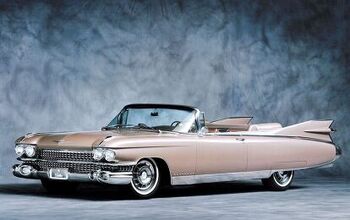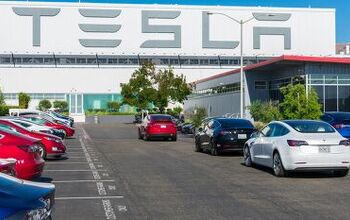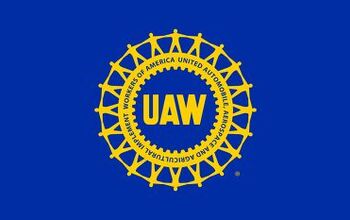Editorial: American Leyland: The GM – Chrysler Bailout That's Guaranteed To Fail
After the initial media support for a potential GM – Chrysler hookup (e.g. Jalopnik.com’s Ray Wert), the bandwagon began to roll like a snowball down the proverbial mixed metaphor hill, and everybody soured on the deal. We even charted how individual commentators changed their positions and eventually “ threw Chrysler to the Wolves.” In Monday’s New York Times, Andrew Ross Sorkin said that GM CEO Rick Wagoner’s continued employment is a “minor miracle.” But the commentatorati are still behind the curve re: the government’s rumored $10b “intervention” in the GM – Chrysler merger. In the main, they have’t even acknowledged that the bailout is happening. That, and the critical fact that it’s structurally designed to fail.
Let’s start with the likely government strings. This is after all, common sense. If the merged GM/Chrysler is going to enjoy the benefits of our largess, they should be held accountable for what happens next. He who owns the gold makes the rules. At least in theory. In theory, you and I might demand that the entire executive floor of the Renaissance Center be fired. But the U.S. government doesn’t see it that way. All indications are that the men who’ve gutted GM will keep their jobs and eviscerate what’s left of the American automaker(s).
But it gets worse. One of the politically-fueled requirements of this politically-fueled bailout: Chrysler-GM must keep as many jobs intact for as long as possible. That’s 97k union jobs that someone’s duly elected officials want to protect. But any analyst with a high school diploma or better knows that both GM and Chrysler are currently too big to survive; too many managers, brands, factories, dealers and workers. Unless the new entity makes job cuts, merging the two automakers makes no sense whatsoever. How do you achieve any benefits if you can’t replace two jobs with one?
At this point, the bailout request from GM and Chrysler is a $10b package (in addition to the $25b previously allocated for plant retooling for more fuel-efficient cars). The combined debt of GM and Chrysler is $52b. GM alone is burning through $1b per month, just to keep the lights on. Even if their collective debt vanished or could be put on hold (a process we once referred to as bankruptcy), bailout number two only provides enough cash to keep GM-Chrysler (a.k.a. American Leyland) rolling for another two years– at best.
The automotive business runs on a five-year cycle. From a product perspective (remember products?), General Motors and Chrysler can’t do anything significant during those two federally-subsidized years. We know exactly what will be on the showroom floor in two years’ time. GM’s “great hopes” were the Chevy Cruze and Volt. While the Volt’s feasibility is debatable, the Cruze (a much easier to build conventional car) is slated to go on sale as a 2011 model some time in 2010. That’s it. Time’s up for GM. Giving them money without restructuring is like heading into the bottom of the ninth, losing, and insisting the other team takes its turn at bat.
So why will the government attempt the bailout anyway? Because “something must be done.” GM and Cerberus (Chrysler’s owner) have powerful friends in Washington. The United Auto Workers may be a shadow of its former self, but it still knows how to deliver votes. And American government officials have always loved dumping cash into the economy right before an election (see Edward Tufte’s 1978 book Political Control of the Economy). Second, class warfare. This bailout makes up for the first “thief in the the night” raid on the public purse for Wall Street fat cats. This one’s about protecting “real jobs” for “middle class working stiffs” who “build stuff,” thus protecting our “industrial base.”
If GM filed for bankruptcy and the government sat back and watched, people would be angry at the “failure to respond.” So they will take a futile action instead, with $10b or more, lots more, to make the problem a little less grave (or at least look that way). It’s a cover-your-ass play on an epic, tragic scale.
As a result, it’s unlikely anyone in Congress or the lame-duck White House will oppose a bailout. Nobody wants to be the first to oppose the bailout when their election opponents are in favor of it. Nor does anyone have a strong desire to go toe-to-toe with the UAW weeks before a local, state and presidential election.
From any rational perspective, it makes far more sense for the government to do something else with the money headed for Detroit. The feds could simple hand every blue collar at GM and Chrysler worker a $100k tax-free check. They put it into schools; provide health care for a pile of people. Or give the American people a tax break. Or simply not spend money they don’t have.
Latest Car Reviews
Read moreLatest Product Reviews
Read moreRecent Comments
- Calrson Fan We are already seeing multiple manufacturers steering away from EVs to Hybrids & PHEVs. Suspect the market will follow. Battery tech isn't anywhere close to where it needs to be for EV's to replace ICE's. Neither is the electrical grid or charging infrastructure. PHEV's still have the drawback that if you can't charge at home your not a potential customer. I've heard stories of people with Volts that never charge them but that's a unique kind of stupidity. If you can't or don't want to charge your PHEV then just get a hybrid.
- AZFelix The last time I missed the Malibu was when one swerved into my lane and I had to brake hard to avoid a collision. 1 out of 5⭐️. Do not recommend.
- 2ACL I won't miss it; it was decent at launch, but in addition to the bad packaging, GM did little to keep it relevant in the segment. I'd prefer that another domestic automaker doesn't just give up on the mainstream sedan, but unlike some of Ford's swan songs, the Malibu made an indifferent case for why they should live.
- ToolGuy TG grows weary of purchasing gasoline. I don't care so much how or why, I am just tired of it. I still buy petroleum products, not 'boycotting oil,' but backing away from gasoline where I can. Sample size = 1.
- Probert Maybe it's not too late for the Dodge Neon I've always dreamed of!!! To the keyboard Robin!


































Comments
Join the conversation
Interesting read. I made the comparison between British Leyland and GM a few months ago in a comment in the Death Watch series. What struck me at the time was the pinning of GM badges onto everything from Chevvy to Cadillac - something BL managed to do with everything from Austin to Jaguar in the early 1970s. This attempt to create a core marketing, er, thing which didn't exist before BL (Leyland made Trucks and money before they were pursuaded to merge with car companies) was doomed to failure as will/has the GM one. BL had neither the money or the cash generating capability to create the new models they needed, and the ones they did create relied heavily on the unreliable (read expensive in warranty claims) engineering of previous models. The BMC/BMH/BL mergers ended up costing the UK taxpayer millions of pounds - and that was when millions where millions. In the end the shrivelled remains, after all the good bits had been sold to BMW and Ford for peanuts, finally died a few years ago with uk.gov adding £6m as a quick bailout before withdrawing any aid and finally letting it die. Even though it was a labour government (Socialist, allegedly) they preferred to see market forces take effect and to pour money into a hole. To see a country arguing over the S word in the election so vehemently and then pouring money into the "dead hourse flagellation society" is pretty amusing in an ironic kind of way.
OK, so looking at this idea from Britain, where we once comtemplated the smoking ruin of British Leyland, the parallel for GM/Chrysler is slightly chilling... try these simple tests from our experience 1966-2005: Sprawling, outdated brands and product range/s? Check High manufacturing costs due to above? Check Tendency to ignore customer perceptions of poor quality? Check Long-standing labour issues arising from history of poor management? Check Weak, strategically illiterate management later quoted as saying something along the lines of "it was a can of worms and we didn't have enough can openers"? Check Tendency to merge with other weak, unprofitable etc (see above) companies as a panacea for improvement? Check Alarming tendency to run out of cash and seek public support claiming "next time it will be different, really"? Check. Mmmm. A full set. It's not looking good.... if GM and Chrysler do cling together as they drift down to oblivion, and new management isn't found, history suggests that you'll be wasting tax revenue on an even bigger disaster. And I hope I'm wrong...